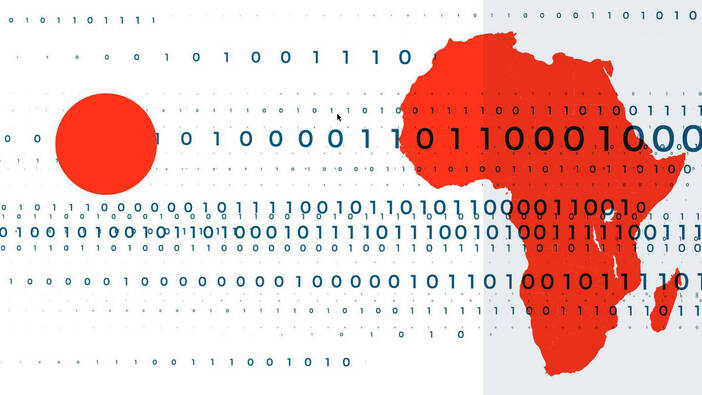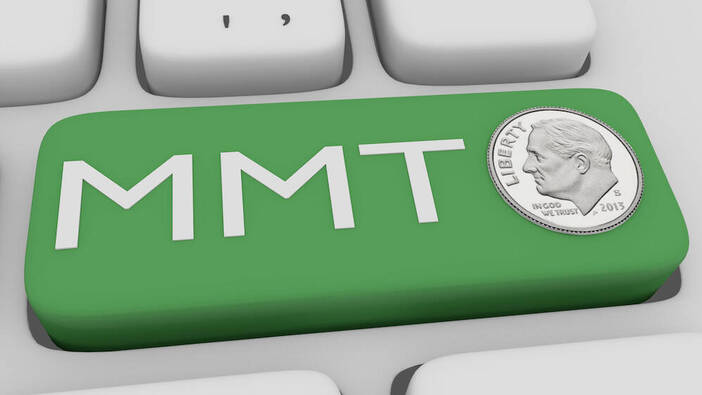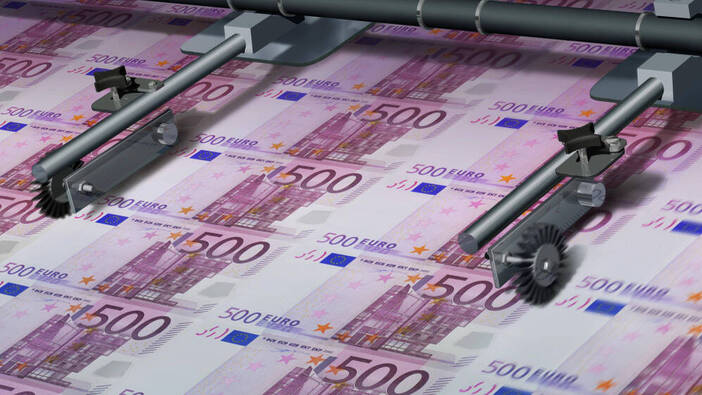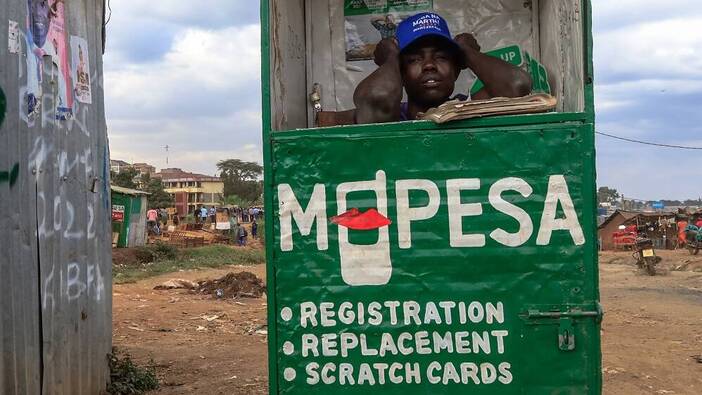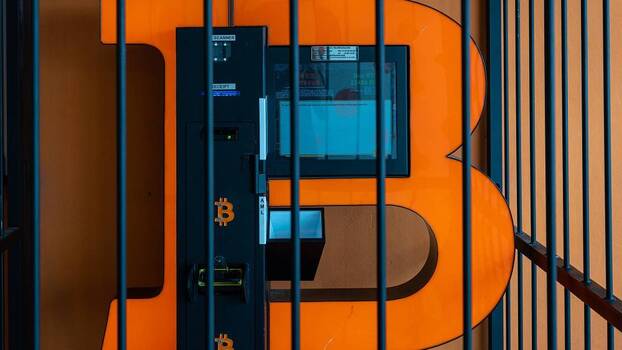
In the shadow of the war in Ukraine and the central banks’ interest rate rally, sheer panic reigned in the tech and crypto sectors. The market value of Bitcoin collapsed in 2022, although it has recently recovered again. The crypto exchange FTX, which issued loans (similar to a bank) using Bitcoin as collateral, went bankrupt.
Fabio De Masi is a former MEP and MP for Die Linke, where he was vice chair of the parliamentary group and its spokesperson on financial affairs. He is currently a research fellow with the Financial Innovation Hub of the University of Cape Town in South Africa.
But there is no central bank to prop up Bitcoin prices in times of crisis. FTX does not even have a deposit insurance system like banks in Germany do. The good news, however, is that crypto assets probably have little connection to the traditional financial system (yet), so there is no threat of a financial system meltdown like in 2007–8 — for now.
When a financial bubble bursts, it always happens in a similar way: in a boom, when money is cheap, investors become increasingly risk-hungry and, driven by the general euphoria, speculate on high price gains. They freely follow the motto: “fake it until you make it!” Whether a company’s business model is sound or a technology is mature is not so important, as long as investors expect other investors to keep buying. In other words, one does not speculate on companies, but on the expectations of other investors. But if the cheap money that drove stock prices is withdrawn, investors flee to safety.
In order to be able to assess the behaviour of other investors in a situation of panic and thus whether one’s own investment will be carried along in the downward pull, one needs a stock market story that everyone believes. If it was telecommunications companies at the turn of the millennium and banks and real estate in the global financial crisis of 2007–8, it is now tech and crypto stocks that are — not without good reason — suspected of having been inflated by the influx of a lot of “stupid money”, although it is often unclear where the profits are to come from in the future.
The Birth of Bitcoin
Bitcoin saw the light of day 15 years ago during the peak of the financial crisis. The inventor (or a group of people) under the pseudonym Satoshi Nakamoto anonymously published the “Bitcoin Whitepaper”, which elegantly described a transaction system that was independent of banks and largely tamper-proof.
The myth surrounding Bitcoin is not a coincidence, but a strategy. For example, it is claimed that the Bitcoin is stable in value because the “money supply” is fixed and thus protects against inflation due to this scarcity and the elaborate process of creating the computer asset.
This has not proven to be true. Anyone who bought Bitcoin a year ago has, at the time of writing in December 2022, made a loss of about 70 percent. Although some early Bitcoin investors made phenomenal gains, about three quarters of all Bitcoin investors made losses, according to a recent study by the Bank for International Settlements.
Therefore, Bitcoin needs a story, much like a trivial piece of art that, with a few wild brushstrokes, is turned into a sought-after collector’s item. However, the monetary philosophy behind Bitcoin is an outdated pseudo-theory that rather benefits from ignorance about our monetary system.
To learn more about the theory behind monetarism and why it is flawed, check out our publication The Role of Money in the Economy.
In modern monetary systems, household and corporate demand for credit determines the money supply. The central bank can influence interest rates, but not the money supply directly. Experiments to control the money supply in the early 1980s, when Ronald Reagan was running the government in the US and Margaret Thatcher in the UK, failed. Bitcoin’s blockchain technology, while exciting, is also inefficient compared to banks or Visa’s financial technology, and the benefits are unclear.
After the 2007–8 financial crisis, crypto hype reached the financial market and sold itself as an alternative to banks creating new money (out of thin air) not backed by gold or other assets (so-called “fiat money”) with the push of a button on their computers.
Why Not Just Print Money in My Basement?
A key challenge of any monetary system is trust. Who ensures that money — whether notes, coins, or numbers on computers — is sufficiently scarce, or that there is “labour” behind it? After all, a banknote itself is worth nothing except for the piece of paper. Who guarantees that I won’t simply print money in my basement?
In a modern monetary system, central banks possess an overwhelming monopoly on notes. A central bank can never go bankrupt in its own currency. The state can also force us to pay our taxes in the currency. Because the state determines what the currency is and puts it into circulation (for example, through government spending), bakers or tradespeople in Germany or France also accept the euro. Money is therefore an arrangement that requires the state. Of course, this trust can collapse, as in hyperinflation, when goods that are not very perishable such as cigarettes, chocolate, or foreign currencies suddenly become shadow money.
Bank money is to be distinguished from central bank money. Banks create numbers on their computers by pushing a button — when they grant us a loan, for example. In the Eurozone, these numbers are denominated in euro.
Why should I pay for my bread at the bakery with Bitcoin when it is supposedly becoming more valuable in the long term?
Bank money, however, is not central bank money, nor is it 100-percent safe from bankruptcy, as was witnessed during the financial crisis of 2007–8. However, central banks can try to indirectly influence (for example, through interest rates) whether more or less bank money is created. The central bank thus grants the banks, which in turn have accounts with the central bank, the privilege of creating money out of thin air so that it does not have to decide for itself who gets a loan.
The banks process payments among themselves and do the accounting. If I transfer 100 euros to a builder who has done some work for me, and who has an account at another bank, their bank's balance at the European Central Bank (ECB) increases, and my bank’s balance at the ECB decreases.
Money Is Just a Number
So what is exactly the innovation of Bitcoin? To understand this, a thought experiment might help.
Imagine you are sitting on a park bench and someone (let’s call this person “Rosa”) gives you an apple in exchange for your hat. You can touch this apple and eat it.Since there are only a limited number of apples growing on trees, you don’t need a third person as a neutral arbiter to confirm that the apple is real. The same goes for your hat, which can be touched.
Now, imagine that Rosa does not give you an apple, but cash (central bank money). You can now hold the banknote up to the light and check whether it is real or fake. Rosa has handed the money over to you. The central bank only prints a certain amount of banknotes, and when you take the note into a store, the seller can be convinced that it is unique by the watermark and other features. You’re not going to successfully sit in your basement and just print banknotes. So each official banknote with a serial number can only be issued once.
Now, imagine that Rosa is not handing out an apple or a banknote, but is making an electronic transfer for your hat because you brought your card reader. The problem, however, is that the money in her account is just a digital number. It’s easy to press a button on a computer and generate more numbers.
Now, imagine if Rosa could just enter those numbers herself, independent of a bank. If Rosa and many other people were to generate too many numbers and were to try to spend all those numbers, possibly the economy would overheat and inflation would set in. To avoid this problem, there are banks that do the accounting among themselves and are in turn monitored by the central bank.
When the payment is completed, you will see a notification on the screen. Rosa has entered her PIN into the card reader, confirming that the transfer is legitimate, and the payment processor has received an electronic signal from Rosa’s bank that their account has sufficient funds. If Rosa only has 20 euro left in her account, there is no risk that she will spend those 20 euro five times. This is because banks execute electronic payment orders according to the order in which they are received by the bank. If Rosa had already previously transferred the 20 euro to someone else, the transaction would not be carried out.
The easiest way to imagine Bitcoin and the blockchain now is to imagine an accounting system that records all transactions made with Bitcoin around the world that day. Instead of bank accounts at the central bank and banks with their computers, here there is one big accounting ledger (the blockchain) that everyone can see on their computers. Whenever a transaction takes place, the entries in the database or blockchain change on all computers.
Transactions on the blockchain work similarly to the children’s memory game, “I Packed My Bag”. Only those who recite the entire chain of items from the previous players in the correct order can pack a new virtual item into the suitcase. Thus, no single player in this network can manipulate the database alone.
Bitcoin is programmed in a way that only a maximum of 21 million Bitcoin can be created. This is to keep the “cybercurrency” artificially scarce. Therefore, supporters of Bitcoin claim that it is a scarce commodity or “digital gold”. The process for mining Bitcoin and updating the blockchain works in such a way that the so-called miners try to solve computational tasks, with their computers in competition. The owners of the successful computers are rewarded with new Bitcoin if they succeed.
The Power of Belief
This is the so-called “proof of work” process. The work and energy involved is intended to keep Bitcoin scarce and provide computing power to the network for bookkeeping. There is also a less labour-intensive “proof of stake” process that relies on confirmation of transactions by established miners. However, it favours wealth concentration by entrusting miners with already large Bitcoin holdings to validate transactions and gain additional Bitcoins.
This elaborate process is the reason why Bitcoin consumes more energy than entire countries, which regularly spur debates over banning mining for ecological reasons. But the process and the programming are also the reason why the technology is not an efficient method for processing transactions: Visa manages about 1,700 transactions per second, Bitcoin only seven. A payment order between banks requires a few computers and possibly a few bank employees for control — Bitcoin involves a whole network of worldwide computers.
Bitcoin could burn out like a star in the financial sky, but crypto technology could still one day become as commonplace as Google Maps or the iPhone.
Of course, Bitcoin could partially switch its energy use to renewable energy. But even then, scarce energy is consumed that would then be lacking elsewhere. The much more important question, therefore, is why we actually need Bitcoin. Banks may justifiably be criticized over charging high fees, delaying digitization, or lending for socially harmful activities such as food price speculation. Nevertheless, why should we have such an elaborate process as Bitcoin to do accounting, when this is one of the few things that banks reliably do?
Bitcoin has no central bank behind it to guarantee value. Bitcoin therefore has a real value of zero, unless you measure it in terms of energy spent. The value of Bitcoin is belief. As long as investors believe that other investors want to invest in Bitcoin and there is enough demand, prices can rise. This is also why the Bitcoin myth is coordinated and aggressively fuelled by some users on social media and internet forums. After all, it’s their money at stake.
Unfit for Use
Of course, many scarce commodities such as precious metals, works of art, or stocks lend themselves to speculation as prices go through the roof when demand is high and supply is limited. However, it is by no means guaranteed that a scarce good will be considered valuable in the long run. Not every work of art fetches high prices. Even my worn socks are scarce, but are not an investment item. Even if crypto technology catches on, Bitcoin could be replaced by other and more efficient assets, or by digital central bank money.
Moreover, Bitcoin is not suitable as a means of payment: why should I pay for my bread at the bakery with Bitcoin when it is supposedly becoming more valuable in the long term? Then I’d rather wait and see instead of spending it — or would you go shopping with a valuable Picasso under your arm?
It is also unsurprising that the Bitcoin price is falling at the very moment when bank money is becoming scarce because central banks are raising interest rates. Bitcoin’s advocates see it precisely as an alternative to “inflationary bank money”. In fact, however, Bitcoin is dependent on bank money in the same way that an addict is dependent on their supplier. Without a supply of bank money, there is no demand for Bitcoin. Moreover, the current inflation is not caused by too much money, but by high energy prices. Mining is therefore becoming more and more expensive.
There remains another argument for Bitcoin: when the whistle-blower platform Wikileaks or former agent Edward Snowden revealed war crimes or surveillance overreach, they were prosecuted and sanctioned. As a result, they use Bitcoin to accept donations, run servers, or secure flight for whistle-blowers. This was necessary because Visa and Mastercard were no longer processing transactions for Wikileaks because of the US sanctions imposed. The use of Bitcoin here is highly understandable. Just as members of the opposition in autocratic regimes use cash, for example, to cover up data traces. Nevertheless, this does not make Bitcoin a useful asset for general use.
When the Demand for Champagne Goes through the Roof
Of course, it is conceivable that after the technically defined maximum amount of 21 million Bitcoin is exhausted, Bitcoin will survive as a virtual artifact of the pioneers of the crypto age. The asset from that time would then be like a rare stamp. The value would then result from scarcity and image, arguably like a work of art.
The enormous inequality in assets and the insufficient investments of the state also lead to investors desperately seeking financial assets. While the majority of the population is straining under high energy prices, demand for particularly expensive champagne, for example, is going through the roof. Crypto technology, therefore, is simply an opportunity for some investors to make an interesting bet.
Blockchain technology could, of course, transform financial markets because, at its core, it enables automated transactions and contracting. Banks and insurance companies could shed staff and increase their profits. Whether this is socially beneficial is a different matter. It is also conceivable that regulators could use the blockchain to monitor high-frequency trading on stock exchanges. Much depends on the development of computer technology and future computing power.
Many start-up companies in the New Economy, which were once valued at billions on the stock exchange, have long since become history. But the internet remains. Bitcoin, too, could burn out like a star in the financial sky. But crypto technology could still one day become as commonplace as Google Maps or an Apple iPhone. After all, the revolution eats its children. We simply do not know. All we know is Bitcoin is not an efficient means of payment. Don’t bank on it.
